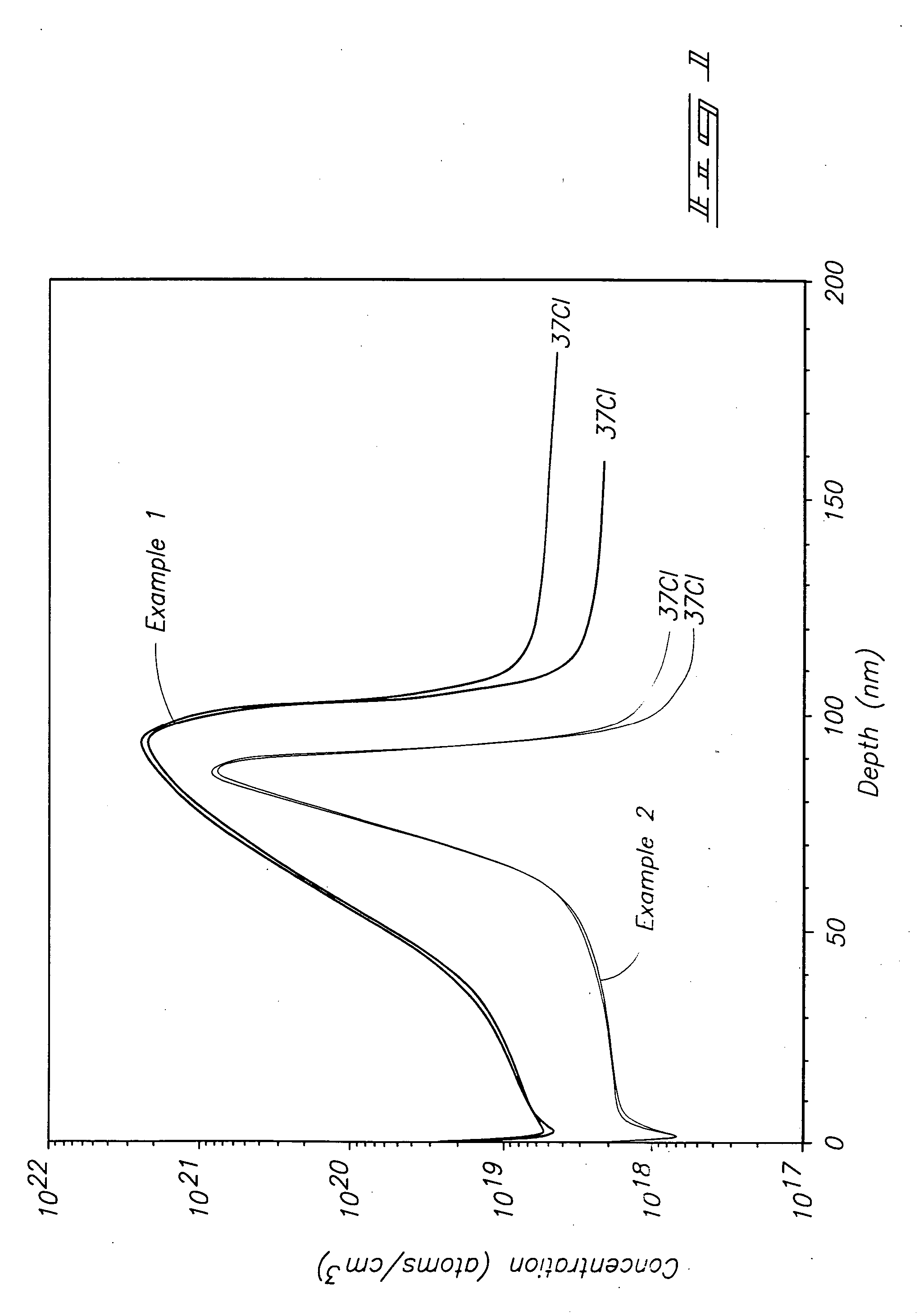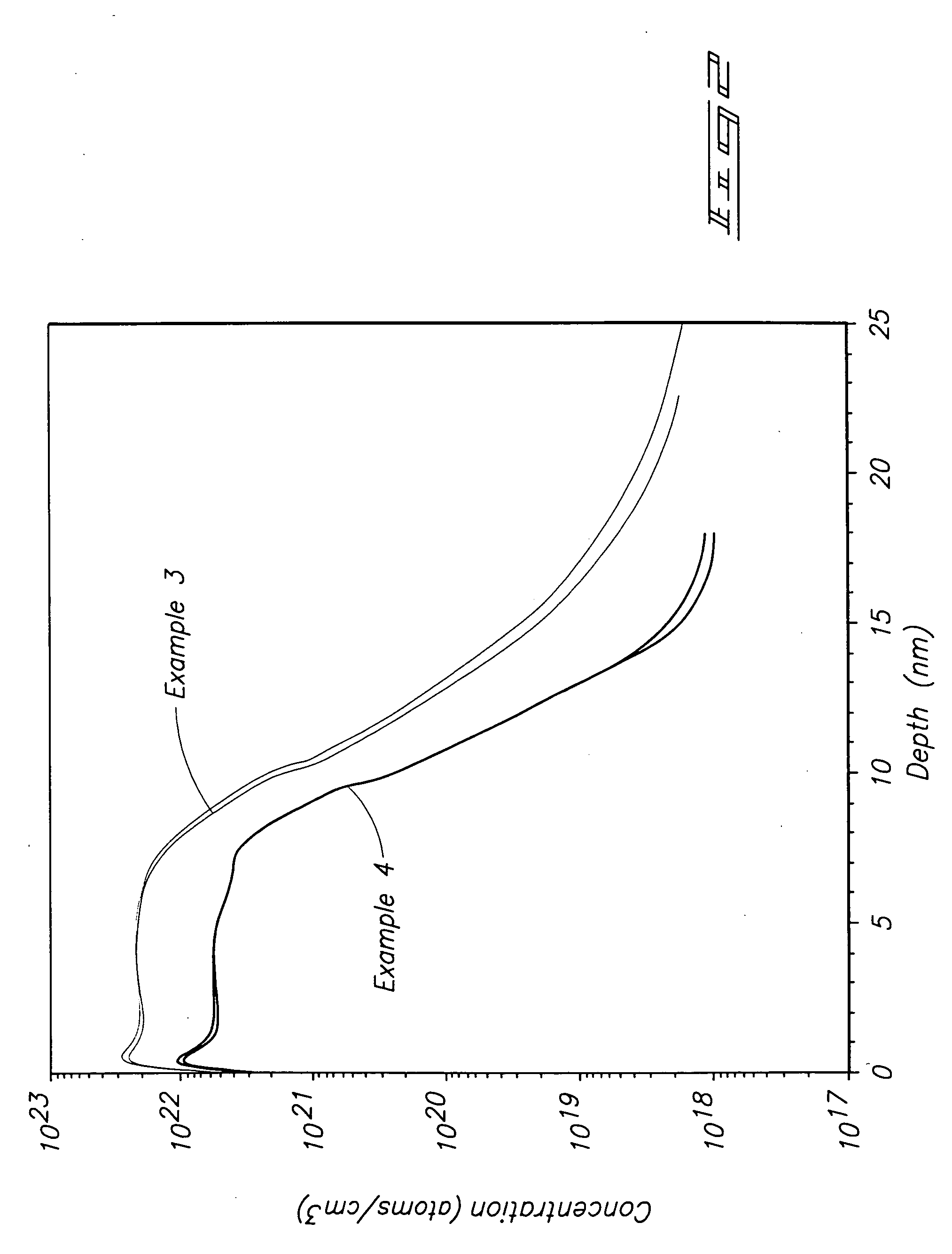Deposition methods using heteroleptic precursors
a technology of heteroleptic precursors and deposition methods, which is applied in the direction of chemical vapor deposition coating, coating, metallic material coating process, etc., can solve the problems of high controllable ald process, inability to easily match the functionality of heteroleptic compounds to a desired deposition process, and introduce undesired deposited material defects, etc., to achieve less halogen content and thermal stability
- Summary
- Abstract
- Description
- Claims
- Application Information
AI Technical Summary
Benefits of technology
Problems solved by technology
Method used
Image
Examples
example 1
[0057] A Ti precursor monolayer was chemisorbed to a silicon substrate maintained at 295° C. by flowing 10 sccm of He carrier gas across liquid TiCl3(NMe2) maintained at 73° C. and into a deposition chamber maintained at 0.01 Torr. The TiCl3(NMe2) was pulsed into the deposition chamber for 2.0 seconds (sec) followed by 2 sec of Ar purge gas flowing at 200 sccm. NH3 was reacted with the precursor monolayer to form a TiN monolayer by flowing 100 sccm of NH3 into the deposition chamber for 1 sec followed by 3 sec of Ar purge gas flowing at 200 sccm. The TiCl3(NMe2) / purge / NH3 / purge cycle was repeated until a 100 nanometer (nm) layer was formed. SIMS analysis for chlorine produced the depth profile shown by the top line in FIG. 1. The “37CI” notation in FIG. 1 indicates that the analysis occurred for the 37 atomic mass unit isotope of chlorine. Even though FIG. 1 shows a spike in Cl concentration from about 40 to about 100 nm, the spike does not reach the higher level shown in FIG. 2 for...
example 2
[0058] Example 1 was repeated at a substrate temperature of 347° C. to form a 90 nm TiN layer. SIMS analysis for chlorine produced the depth profile shown by the bottom line in FIG. 1. Even though FIG. 1 shows a spike in Cl concentration from about 60 to about 100 nm, the spike does not reach the higher level shown in FIG. 2 for ALD using TiCl4 and overall Cl concentration is much lower.
example 3
[0059] A Ti precursor monolayer was chemisorbed to a silicon substrate maintained at 450° C. by flowing a carrier gas across liquid TiCl4 and into a diffusion furnace deposition chamber. The TiCl4 was pulsed into the deposition chamber followed by purge gas. NH3 was reacted with the precursor monolayer to form a TiN monolayer by flowing NH3 into the deposition chamber followed by purge gas. The TiCl4 / purge / NH3 / purge cycle was repeated until a 10 nanometer (nm) layer was formed. SIMS analysis for chlorine produced the depth profile shown by the top line in FIG. 2.
PUM
| Property | Measurement | Unit |
|---|---|---|
| temperature | aaaaa | aaaaa |
| temperature | aaaaa | aaaaa |
| vapor pressure | aaaaa | aaaaa |
Abstract
Description
Claims
Application Information
 Login to View More
Login to View More - R&D
- Intellectual Property
- Life Sciences
- Materials
- Tech Scout
- Unparalleled Data Quality
- Higher Quality Content
- 60% Fewer Hallucinations
Browse by: Latest US Patents, China's latest patents, Technical Efficacy Thesaurus, Application Domain, Technology Topic, Popular Technical Reports.
© 2025 PatSnap. All rights reserved.Legal|Privacy policy|Modern Slavery Act Transparency Statement|Sitemap|About US| Contact US: help@patsnap.com



